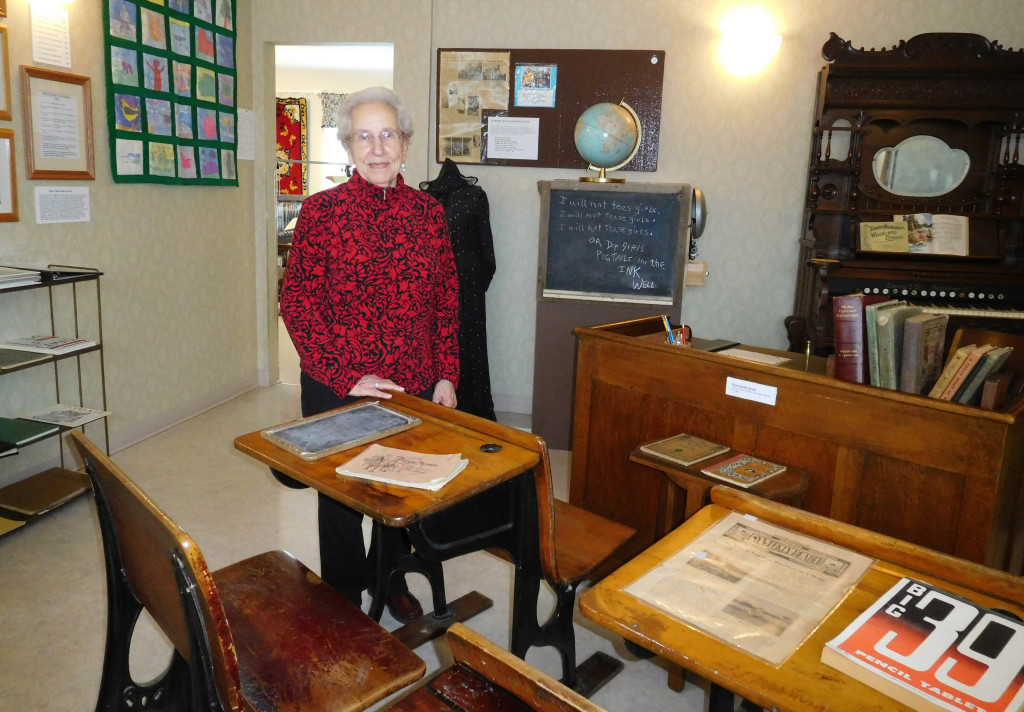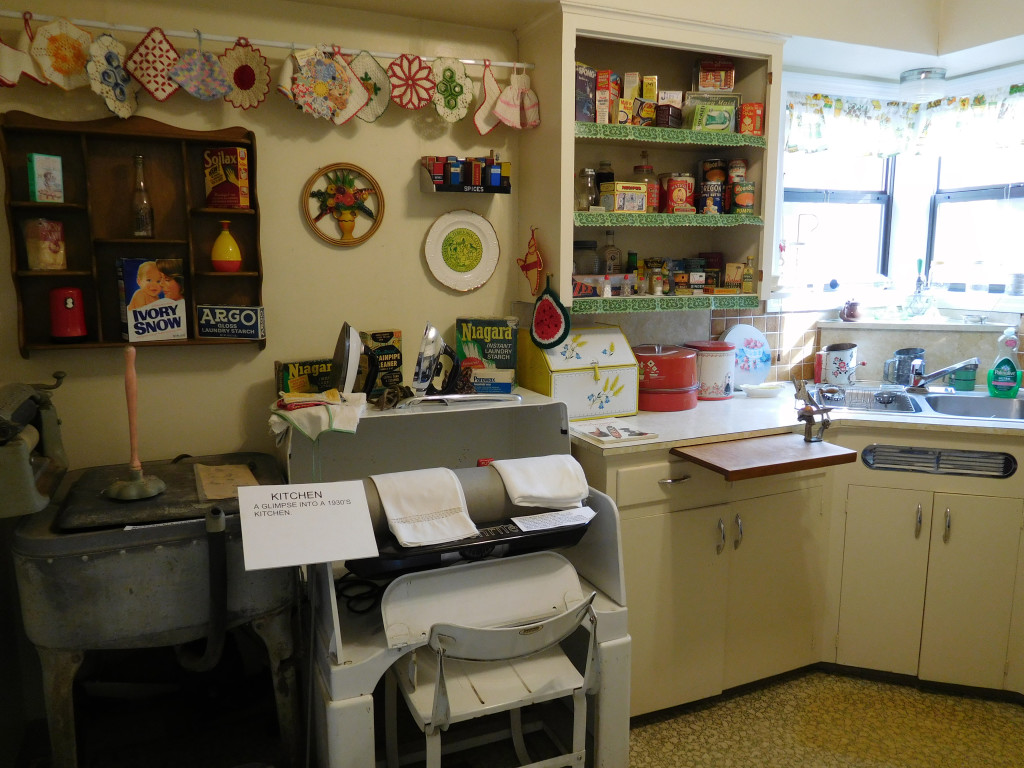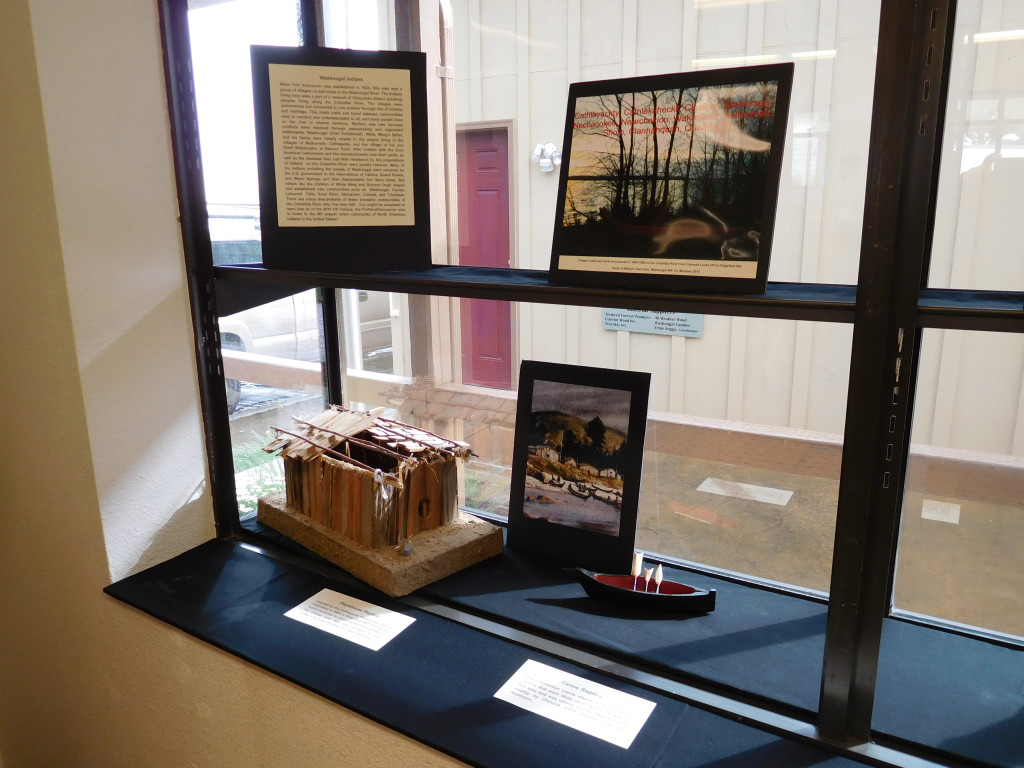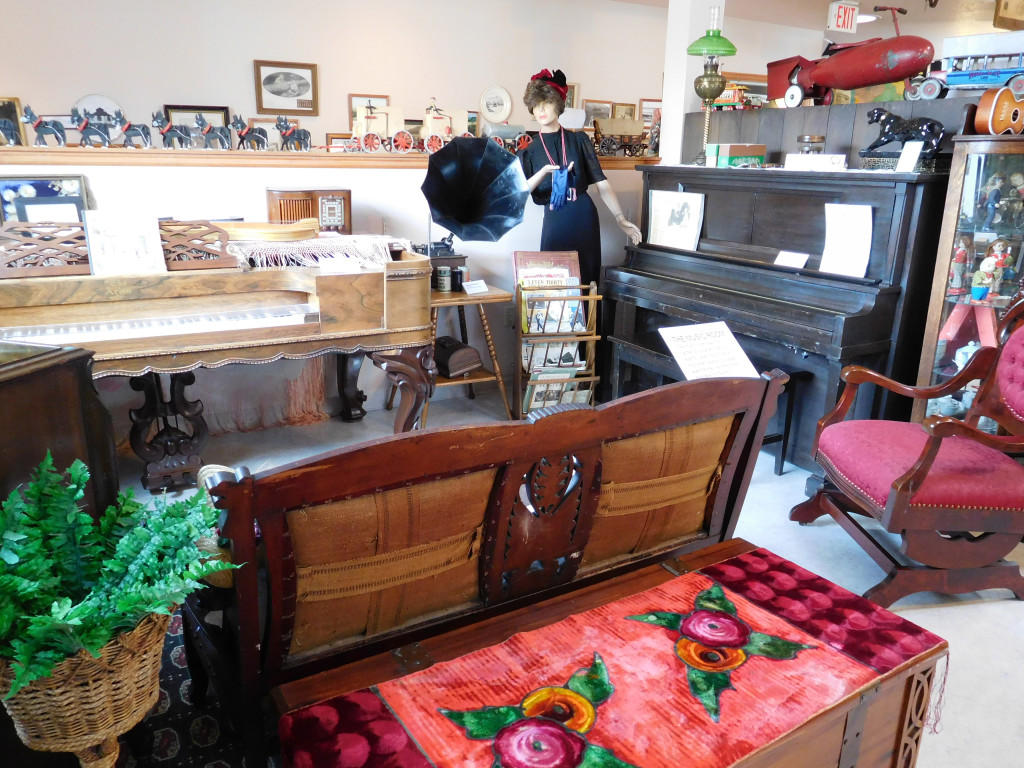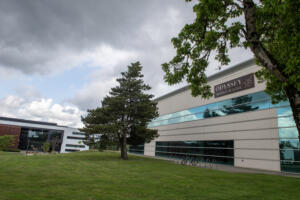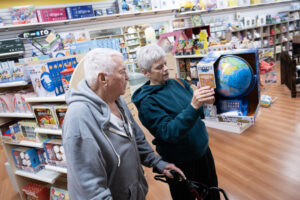When Bernie Englund enters the Two Rivers Heritage Museum to begin her volunteer shift, it has a whole different feel than a few months ago.
That’s because the museum has undergone a facelift during its winter closure, which volunteers are hoping will make it more appealing and interesting for visitors.
“It’s now a better experience for the younger generation, and reminds the older folks of what life used to be like,” Englund remarked.
Displays include a replica of a 1930s kitchen, a one-room schoolhouse complete with potbellied stove, a blacksmith shop replica and parlor area. Music from different eras is piped into the rooms to give them an authentic feel.
A wall of photos and memorabilia includes well-known local residents, from Louisa Wright, the area’s first doctor, to Alexa Efraimson, 2015 Camas High School graduate and professional runner. The changes were made possible through months of volunteer labor and a grant from the Beals Foundation. The museum volunteers have updated flooring, removed well-worn carpet and linoleum, and installed shiny new floors including simulated wood planks in the entry.


